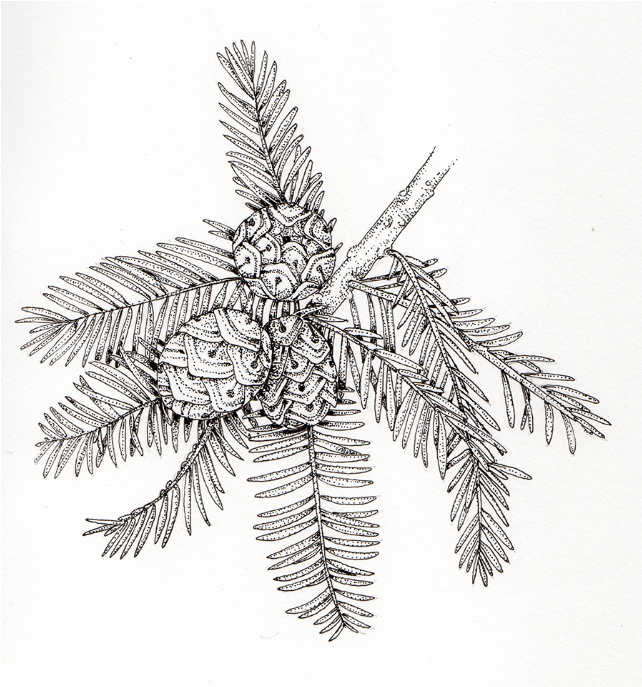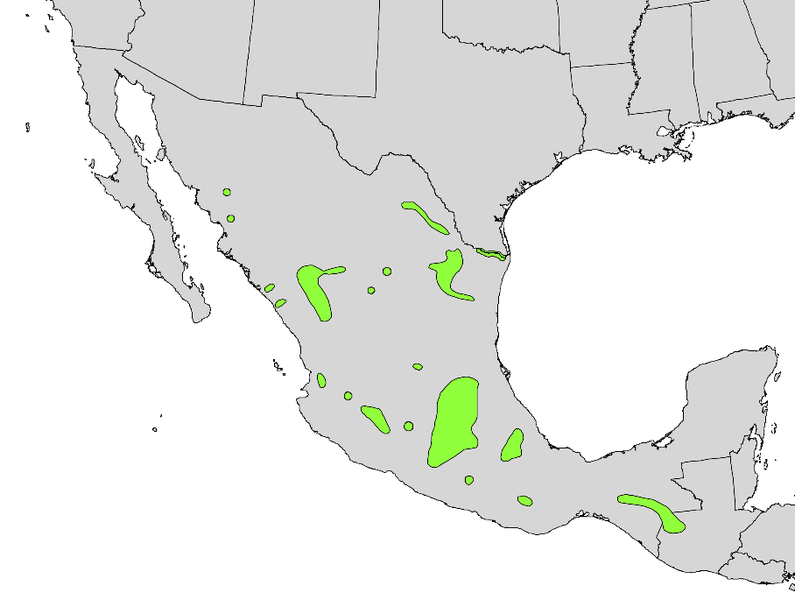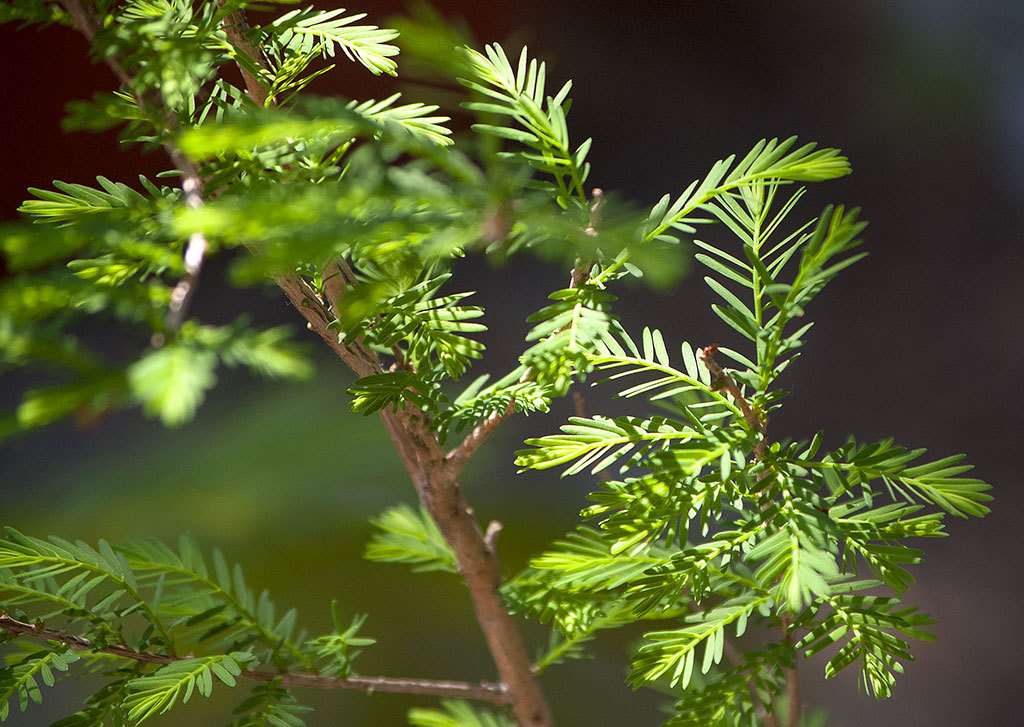
Taxodium mucronatum, as described in 1853 by Michele Tenore (1780 - 1861), in Annales des Sciences Naturelles; Botanique, sér. 3, 19th edition, is commonly known as Ahuehuete, ciprés, pénjamu, and sabino in the Spanish language. In English, common names include, Montezuma or Mexican cypress. In 2005 Alicia Elena MartÃnez Bautista wrote in El Ahuehuete many of the names known to Mexico's indigenous people. They include Ahuehuete is a Nahuatl phrase that means "old man of the water," a fit name for a tree that is always associated with swamps, streams or springs. The tree is sometimes also called Ciprés de los Panatanos (Cypress of the Marshes).
While the ACS, in cooperation with the Royal Horticultural Society, maintains T. mucronatum split as a free-standing species, many authorities prefer the 3 species of Taxodium lumped into T. distichum with the 2 remaining species relegated to varietal status. In the case of Montezuma cypress, the most commonly seen lumped synonyms are Taxodium distichum (L.) Rich. var. mucronatum (Ten.) A. Henry 1906 and Taxodium distichum (L.) Rich. var. mexicanum (Carr.) Gordon 1858.
Description. Montezuma cypress is a fully- to semi-deciduous, coniferous species of tree with characteristics that are virtually identical to bald cypress (Taxodium distichum) with the following exceptions:
The extent of T. mucronatum being fully deciduous is subject to the extent of the "dry season" in its native range. T. distichum, is fully deciduous with the change of seasons; it is always fully deciduous in winter. One should note the dry season and winter occur in the same time of year in central America.

Distribution. This species is native to Guatemala; Mexico, in the following states: Chiapas, Coahuila, Distrito Federal, Durango, Guanajuato, Guerrero, Hidalgo, Jalisco, México, Michoacán, Morelos, Nayarit, Nuevo León, Oaxaca, Puebla, Querétaro, San Luis PotosÃ, Sinaloa, Sonora, Tabasco, Tamaulipas, Tlaxcala, Veracruz, and Zacatecas. In USA: southern Texas, along the Rio Grande River valley.
Its preferred habitat is in three often disjunct ecological settings: riparian areas, marshes, and springs. By far the most common of these is riparian areas, where the species can be found growing throughout its native range. It is often a major component of such riparian forests, occasionally forming pure stands, or growing with Platanus, Populus, Salix, Ficus, Inga, or various other taxa through its extensive range. The species commonly grows in canyons in arid regions where surface water does not flow through the year, but where its root system can secure perennial water.
Hardy to USDA Zone 9 - cold hardiness limit between 20° and 30°F (-6.6° and -1.1°C).

